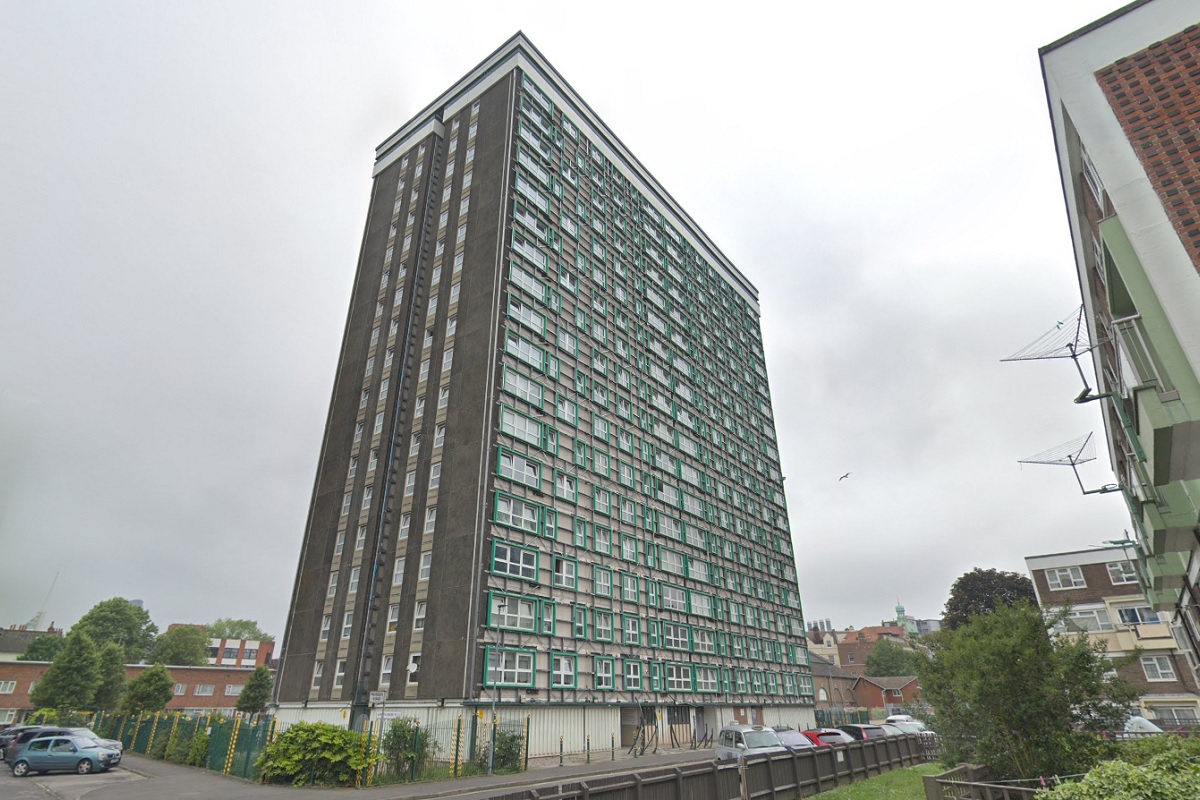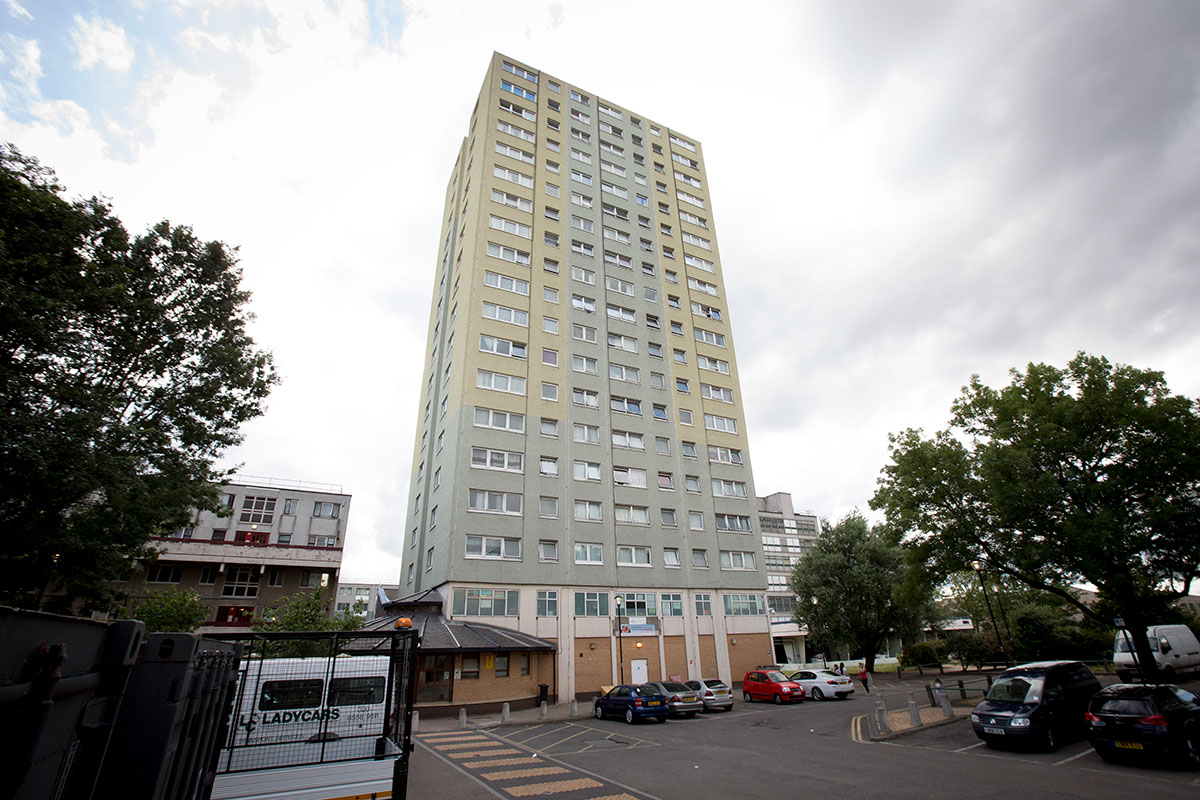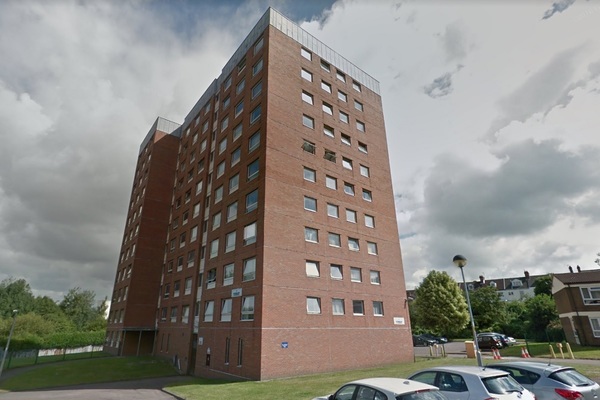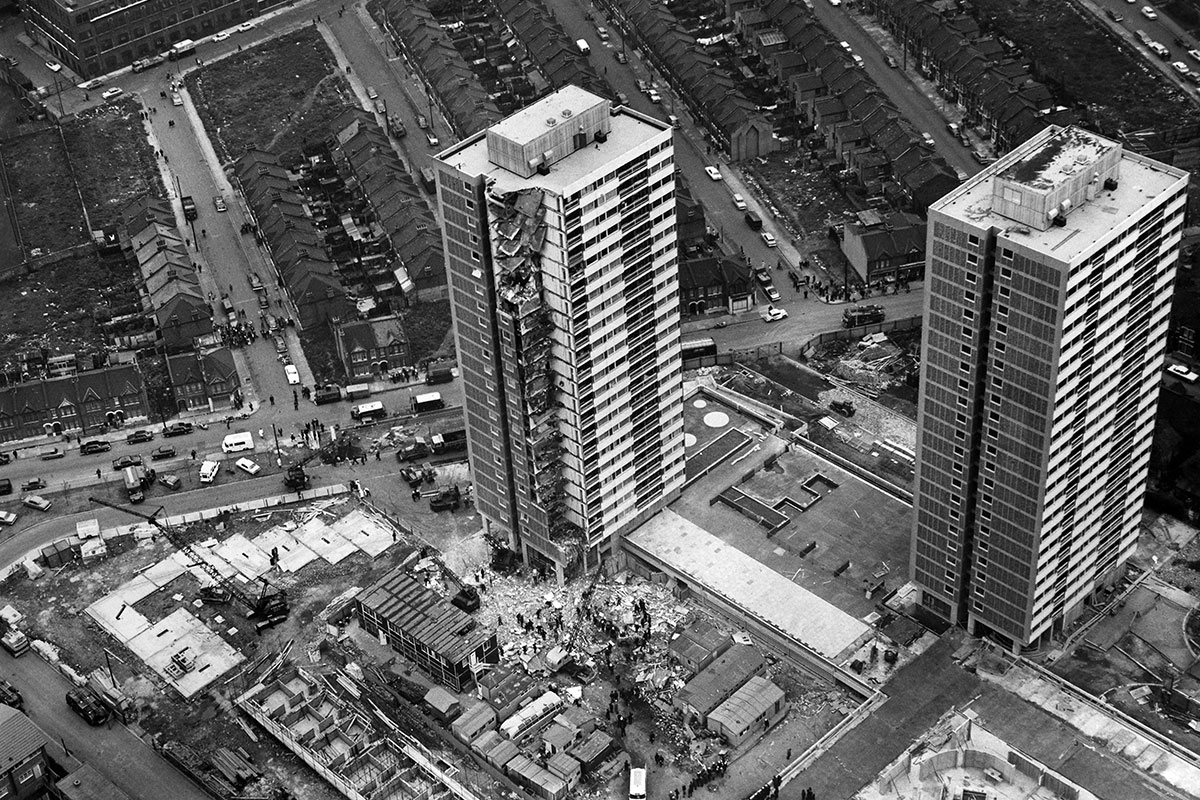You are viewing 1 of your 1 free articles
Council to demolish large panel towers
Two council tower blocks built using the same construction system as Ronan Point and previously covered in Grenfell-style cladding are set to be demolished.
Portsmouth City Council’s cabinet agreed to knock down Horatia House and Leamington House and consult over replacing them with new housing at a meeting this morning.
An officer’s report considered at today’s meeting said that it would be “financially unviable” to carry out necessary refurbishment works on the blocks, which would require “extensive major structural works… including strengthening of internal walls and floors throughout the buildings that can only be undertaken when both blocks are empty”.
Strengthening, recladding, internal refurbishments and sprinklers would cost between £81m and £86m and take until 2025, it added.
Consultants for the council estimated these works would only extend the blocks’ ‘useful life’ for another 30 years – over which time the council would lose between £16m and £20m if their flats were let at social rent, meaning it could not meet the cost of borrowing for the works.
Horatia House and Leamington House were built in 1965 using the Bison large panel system (LPS) of construction, which has come under significant scrutiny in the past two years.
LPS was used to build Ronan Point, a tower block in east London which partially collapsed following a gas explosion in 1968, killing four people.
The two Portsmouth high rises also had aluminium composite material cladding removed in the wake of the Grenfell Tower fire.
There is no piped gas in the building and portable gas appliances have been banned.
As of early February, 50 households remained in the blocks with 29 already having accepted an offer to move out.
Architects have told the council that 441 new homes could be delivered on the site.
Officers estimate the land would only be worth £2m after demolition – which would cost between £5m and £6m.
What are large panel systems and what’s wrong with them?
LPS prefabricated concrete construction became popular in UK the 1960s as a way of building cheap housing.
An LPS high rise typically consists of factory-made panels assembled on-site. Initially, floor and wall panels were inserted into the structural, load-bearing frame of the building and kept in place by only their own weight.
The partial collapse of the Ronan Point high rise in Newham in 1968 was caused by a gas explosion that dislodged the walls of the building. Four people were killed. This led to a programme of strengthening LPS block, connecting the panels together rather than relying on gravity.
But over the last year, problems have been developing at number of LPS buildings.
August 2017: Engineering consultancy Arup finds that a gas explosion at the Ledbury Estate tower blocks in Southwark could cause a “disproportionate collapse” similar to the Ronan Point disaster.
November 2017: Hammersmith & Fulham Council informed residents of Hartopp Point and Lannoy Point with updated evacuation advice from the London Fire Brigade. Landlords usually adopt a ‘stay put’ policy for tower blocks, but the buildings were found to have breaches in fire compartmentation in walls between flats.
April 2018: Tower block residents in Rugby had to move out of their homes after the council found two large panel blocks had been built to a “poor standard” and could be at risk in a fire or explosion.
April 2018: Goscote House in Leicester, a 23-storey high rise constructed in 1973 with the same large panel system as Ronan Point was set to be demolished due to concerns about its “long-term structural integrity”.
June 2018: Investigations at Horatia House and Leamington House, two 18-storey buildings owned by Portsmouth City Council, find that the concrete is “not as strong as expected”. Around 800 residents were informed they would have to be re-housed.











